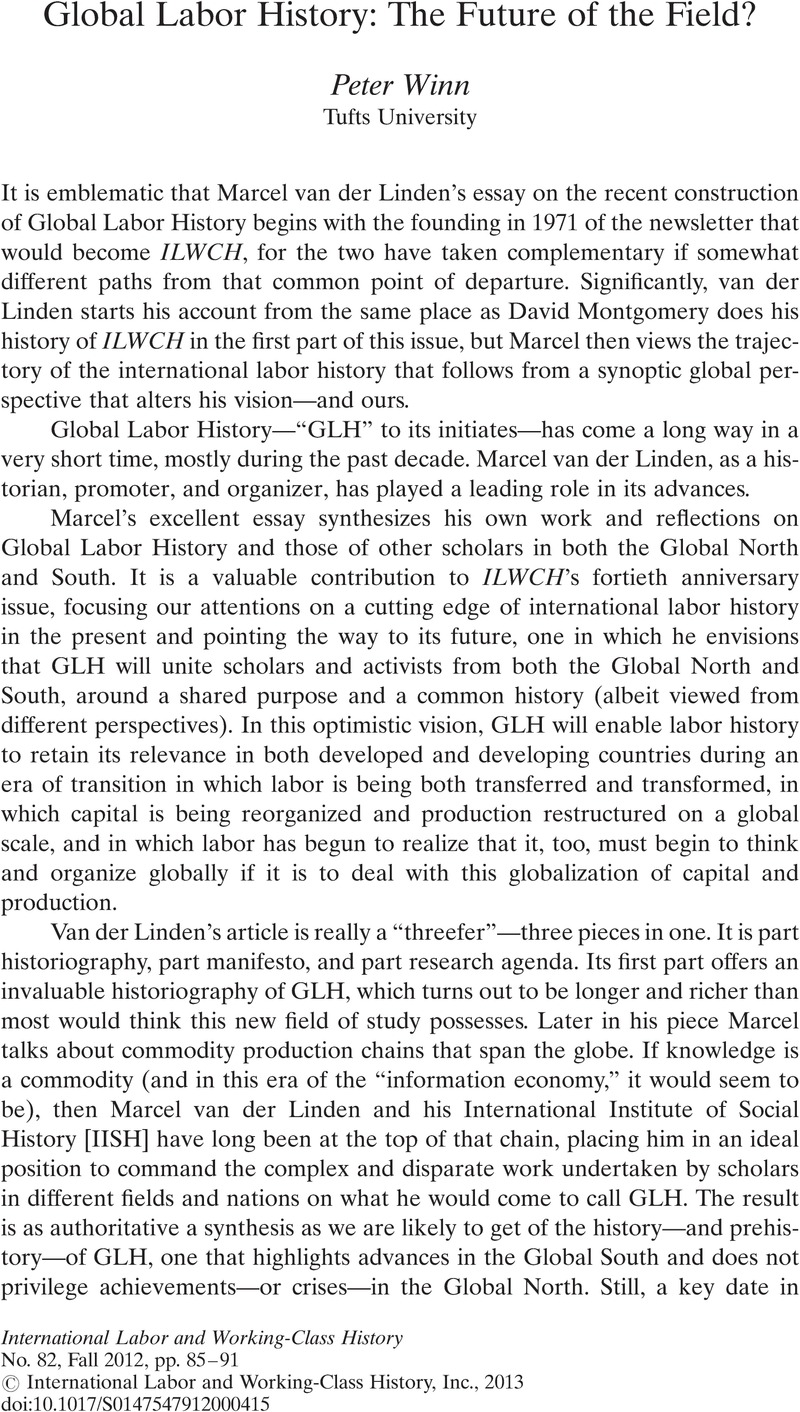Article contents
Global Labor History: The Future of the Field?
Published online by Cambridge University Press: 08 March 2013
Abstract

- Type
- Responses
- Information
- Copyright
- Copyright © International Labor and Working-Class History, Inc. 2013
References
Notes
1. van der Linden, Marcel and Lucassen, Jan, Prolegomena for a Global Labour History (Amsterdam, 1999)Google Scholar.
2. See for example, Salazar, Gabriel, Labradores, peones y proletarios: formación y crisis de la sociedad popular chilena del siglo XIX (Santiago, 1985)Google Scholar and Pinto, Julio, Trabajos y rebeldías en la pampa salitrera : el ciclo del salitre y la reconfiguración de las identidades populares (1850–1900) (Santiago, 1998)Google Scholar. Salazar studied in England, Pinto in the United States. They would later coauthor the pathbreaking Historia contemporanea de Chile, two of whose five volumes would focus on workers as economic and social actors and on labor as a social movement (Santiago, 1999–2010).
3. Readers interested in exploring this literature should survey the website of LOM Ediciones, Chile's leading Leftist press, which is where most of the best Chilean labor history has been published since 1990 (www.lom.cl).
4. Advis, Luis and Quilapayún, , Santa María de Iquique: Cantata Popular (Santiago, 1970)Google Scholar.
5. See, for example, Devés, Eduardo, Los que van a morir te saludan (Santiago, 1997/2007)Google Scholar; González, Sergio, Ofrenda a una masacre (Santiago, 2007)Google Scholar; and Grez, Sergio, Los anarquistas y el movimiento obrero (Santiago, 2007)Google Scholar.
6. The situation is different and better with regard to presentist sociological studies of Chinese labor and working conditions, as Xiaodan Zhang's essay elsewhere in this issue makes clear. Even those studies, however, face constraints and self-censorship, and cutting-edge critical studies are more likely to be published in Hong Kong or by overseas Chinese scholars than in the People's Republic of China—a very different pattern from India.
7. The sectoral comparative global labor histories (textiles, sex work, etc.) sponsored by the IISH are important starting points that should establish basic global labor histories that will in turn pose new research questions for other historians to pursue and issues for the field to debate. This is the way that fields of study are constructed, and GLH is very much a field in construction, not yet an established and consolidated discipline.
- 4
- Cited by


